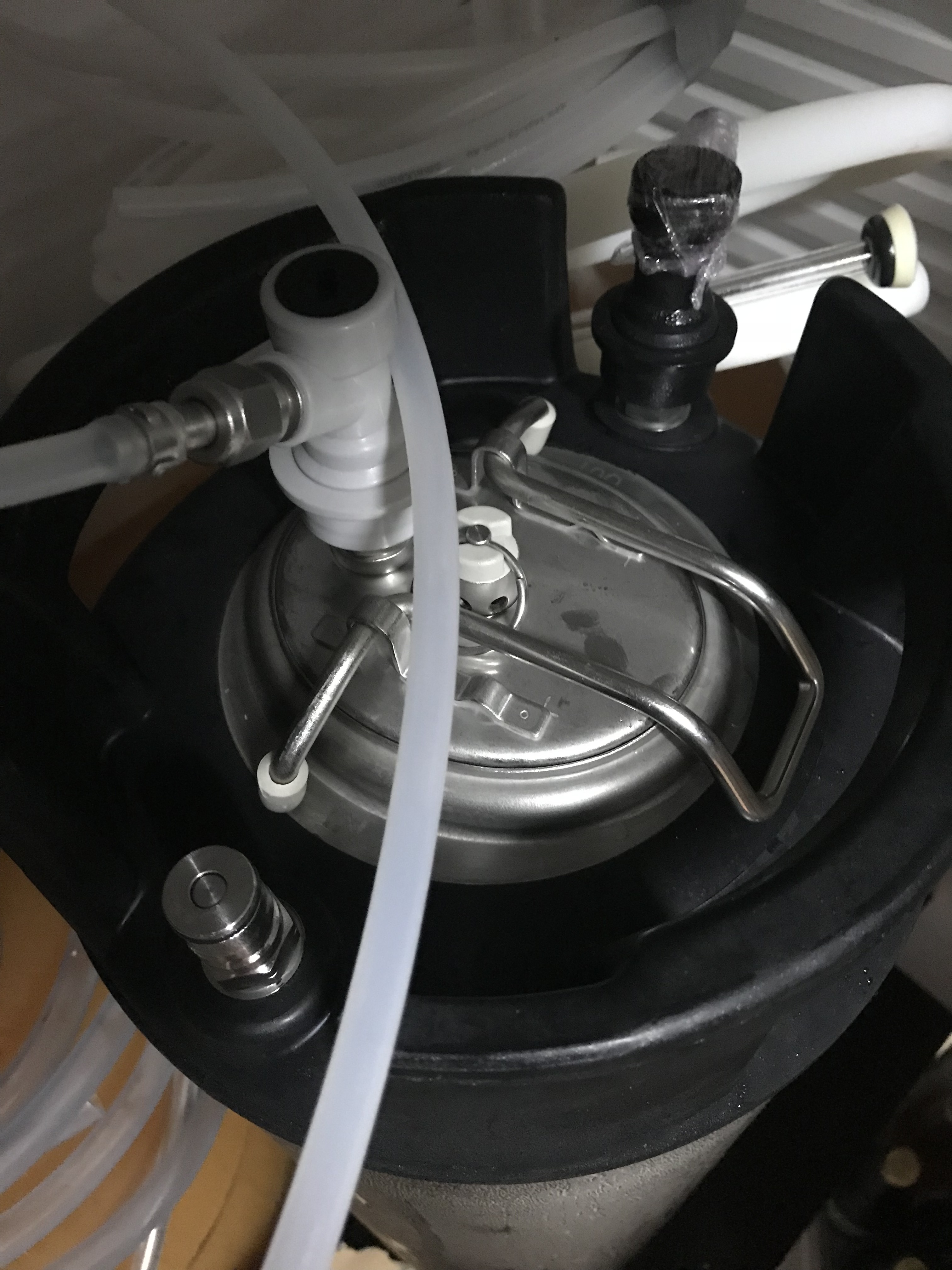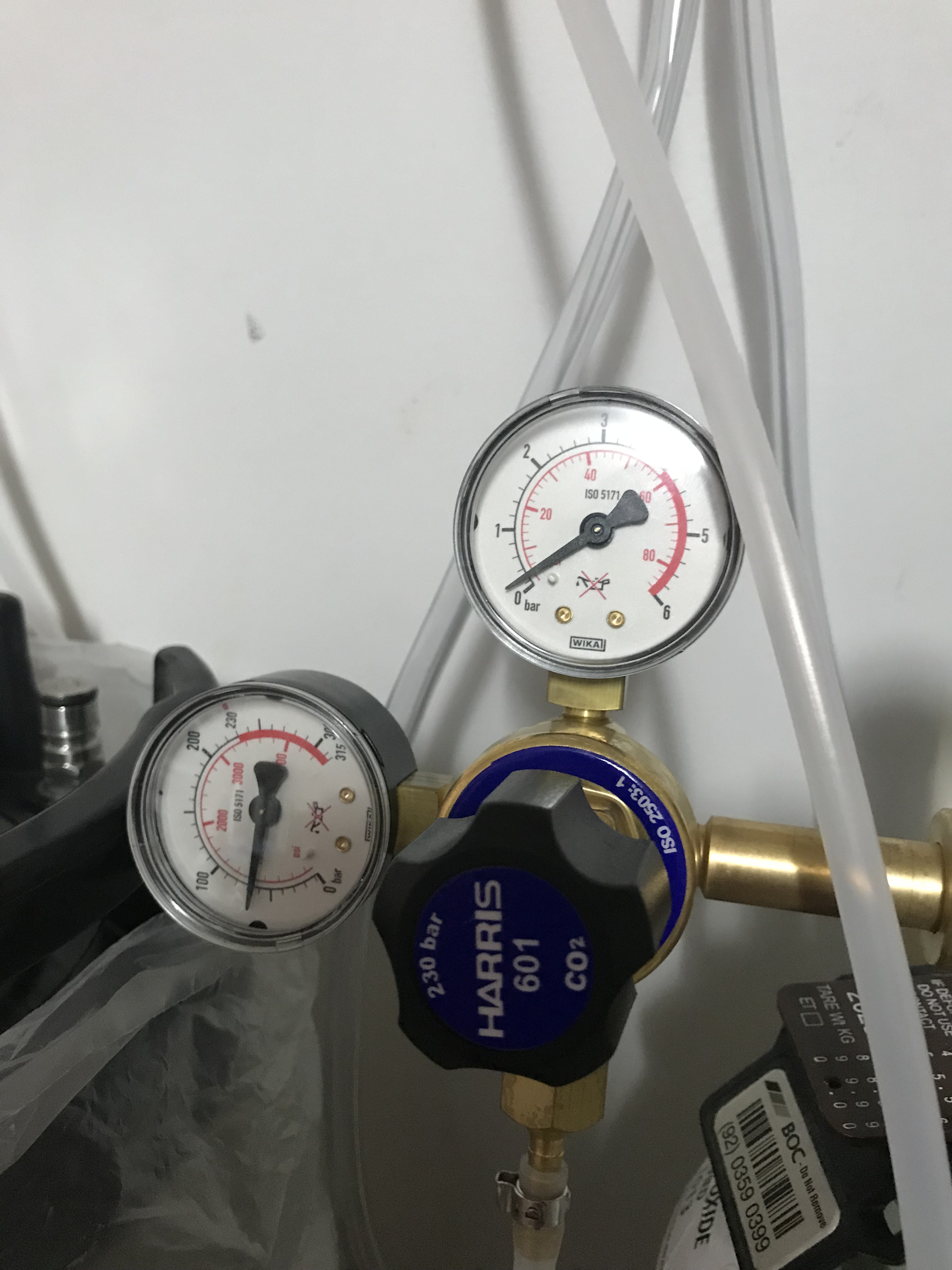missiletech
Active Member
- Joined
- Nov 8, 2015
- Messages
- 41
- Reaction score
- 1
Also, happy new beer!



I'm glad you bumped it or I would have missed it. I just ordered a lid with built in gas post and .5 micron carb stone. Kind of thinking out loud, but it seems like I could ferment in a keg and then use co2 through the stone to push the beer to an aging/serving keg thus transferring and carbonating in one step. Anyone have any thoughts on this?Well I just had to bump this thread. I ordered a carbonation (diffusion) stone today and will try it on my next batch. I'm not going to do all the flipping and gauges, I'm pretty frugal so it's the stone and 2' of hose being attached to the gas in tube. We'll see how it does.
I thought I'd reply to this thread as it was the highest post from this forum on this subject in the google search I did.
I received my carbonation stone and lid today and have set it up as shown in the pictures below. I also looked for some instructions and found them here. Summary below:
"How to use this product:View attachment 559276
Beer must be stored cold 34–40°F
1. Preboil the stone for 2–3 minutes before using. This assures you that your stone is sterile and any residual oils have been boiled off.
2. Sanitize the whole keg lid before submersing into your keg filled with beer.
3. Set your PSI on your regulator to 3–4psi and attach your gas in fitting to the body connect on the lid. Leave keg at this pressure for 1 hour.
4. Raise your pressure 2PSI per hour until you reach 10–12psi. Leave it at 10–12psi for 24 hours. Pour a pint and test the carbonation. If you think your beer needs more CO2 leave for another 4–6 hours and have another pint.
5. Remove carbonation lid after carbonation level is satisfactory. Return original keg lid for long term storage."
Tube and 0.5 micron stone connected to disconnect on lid
View attachment 559278
Set at around 4psi for first hour, Perry temp 3.5C (38.3F)
Pressure transfer to another keg then?Step 5 is nonsense. Exposing beer to O2 and loosing volatiles. No thank you.
Here's an article that explains it quite well:Yep, I remember seeing some info on wetting pressure, thanks for the reminder!
Here's an article that explains in quite well:
Calculating Carbonation Pressure
To calculate our equilibrium PSI, we start with the wetting pressure. The wetting pressure is the PSI we need to produce bubbles on a carbonation stone when wetted. For most stones, this wetting pressure is between 2-8 PSI. To calibrate the stone, submerge it in water at the same orientation as it will be in the tank and slowly increase the PSI until bubbles begin to flow, record the PSI, then slowly decrease the CO2 until the bubbles stop completely. Record this last PSI reading and take the average of these two readings to determine your wetting pressure PSI.
Next, we need to determine the head pressure on the stone itself. The head pressure of the product on the stone will play a role in the pressure needed to carbonate. We start with the assumption that approximately every 28 inches of product will add 1 PSI of pressure against the stone. This PSI needs to be added to the wetting pressure to determine how much total pressure is required to begin producing bubbles inside of the tank. Every tank will be different, so this is merely an approximation and you may need to adjust slightly.
One you have your two pressure values and selected the desired CO2 volume of your final product, we can punch those values in the equation below and get the PSI output needed from your CO2 system:
Wetting Pressure + Head Pressure + desired Equilibrium PSI = Carbonation Pressure
As an example:
Wetting Pressure (3.0) + Head Pressure (2.43) + Equilibrium PSI (9) = 14.43 PSI
- Carbonation Stone Wetting Pressure = 3.0 PSI
- A 20 BBL Brite Tank w/ 18 BBLs (10% head space) that is 68 vertical inches of product, thus 68 in. / 28 in. = 2.43 PSI
- We have a dark Ale with a desired CO2 volume of 2.17 @ 45°F, thus we find an equilibrium PSI = 9
You may round up or down depending on your leanings or aim for a nice middle ground of 14.5.
(https://www.glaciertanks.com/carbonation.html)
Enter your email address to join: